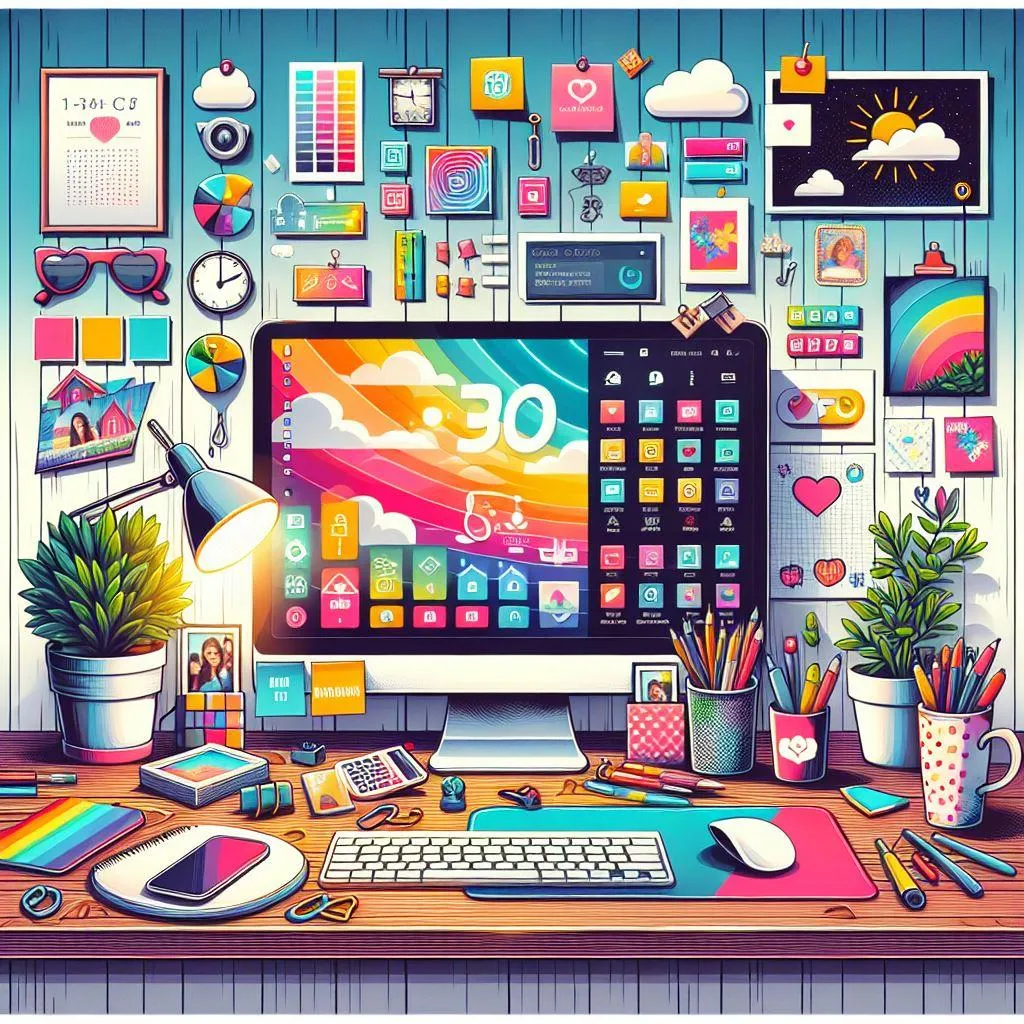
10 Awesome Ways to Customize Your Desktop Layout
Your desktop is more than just a launchpad for apps — it’s your digital workspace. And just like any workspace, a well-organized and personalized setup can make a world of difference in both how it looks and how efficiently you get things done.
Whether you're running Windows, macOS, or Linux, customizing your desktop layout is a fun and practical way to improve your experience. From simple tweaks like changing the wallpaper to more advanced tools and automation, there are countless ways to make your computer truly feel like yours.
Let’s dive into 10 creative and effective ways to customize your desktop and upgrade your daily workflow.
1. Refresh Your Wallpaper
The simplest way to give your desktop a facelift is by changing your wallpaper. It sets the tone for your workspace—whether it’s a serene landscape to keep you calm, a personal photo that brings a smile, or dynamic visuals that change throughout the day.
Windows: Right-click the desktop and select Personalize to change your background.
macOS: Head to System Preferences > Desktop & Screen Saver.
Linux: Most desktop environments like GNOME or KDE let you change wallpaper via right-click or system settings.
2. Explore Custom Themes
Take your desktop personalization further with themes that transform everything from your window borders to fonts and icons. A theme can completely change the aesthetic of your interface and help you create a more immersive environment.
Windows: Download themes from the Microsoft Store or third-party platforms.
macOS: While more limited, tools like LiteIcon and cDock can help with visual tweaks.
Linux: Enjoy the most flexibility—tools like Plank, GTK Themes, and KDE Look let you build from the ground up.
3. Declutter with Folder and Icon Organization
A tidy desktop = a clear mind. By grouping similar files, creating project-specific folders, and aligning icons thoughtfully, you can keep your workspace functional and stress-free.
Consider:
Using color-coded folders.
Pinning frequently used apps to your dock or taskbar.
Hiding all desktop icons when you need a minimalist view.
4. Add Informative Widgets
Widgets or gadgets can give you instant access to things like the weather, your calendar, or CPU usage—all without opening an app.
Windows: Use tools like Rainmeter to create custom widgets.
macOS: GeekTool is a favorite for advanced users.
Linux: Conky is your go-to for a highly customizable info overlay.
5. Use Custom Icons
Why settle for generic folder icons when you can match everything to your personal aesthetic? You can design your own or download icon packs that better suit your vibe.
Design using apps like GIMP or Photoshop.
Apply via right-click > Properties (Windows) or Get Info (macOS).
Linux users can swap icon sets easily through system settings.
6. Set Up Multiple Workspaces
Multitask smarter, not harder. Virtual desktops (or workspaces) allow you to separate tasks—like having one desktop for work, one for gaming, and another for personal projects.
Windows: Use Task View (Win + Tab).
macOS: Access Mission Control and add desktops with a swipe.
Linux: Most environments support multiple workspaces natively.
7. Master Keyboard Shortcuts
Cut down on clicks with custom keyboard shortcuts. Launch apps, toggle desktops, or automate commands with just a few keystrokes.
Windows: Customize in Settings > Accessibility > Keyboard.
macOS: Use System Preferences > Keyboard > Shortcuts.
Linux: Head to Settings > Keyboard or use tools like xdotool.
8. Automate the Repetitive Stuff
Tired of dragging files around or doing the same three clicks every morning? Automate it!
Windows: Use AutoHotkey to build quick scripts.
macOS: Automator or Shortcuts can handle complex workflows.
Linux: Write bash scripts or use Cron for scheduled tasks.
9. Customize the Taskbar or Dock
Make your taskbar or dock do more for you. Rearranging apps, resizing icons, or adding shortcuts can streamline your workflow and give your desktop a cleaner look.
Windows: Right-click the taskbar for options like pinning apps or adjusting icon size.
macOS: Drag apps into your dock and tweak size and position in System Preferences.
Linux: Use dock managers like Plank, Docky, or Latte Dock.
10. Tap Into Third-Party Tools
Want total control? Third-party customization tools unlock next-level desktop magic.
Windows: Rainmeter offers endless widget possibilities.
macOS: GeekTool and cDock provide great tweaks.
Linux: The open-source ecosystem gives you access to full desktop environment mods.
Online communities like Reddit’s r/unixporn or DeviantArt are full of inspiration, tools, and walkthroughs to help you level up your setup.
Make Your Desktop Work for You
Customizing your desktop isn’t just about making it look good — it’s about designing a space that helps you stay focused, creative, and organized. Whether you're a minimalist, a visual thinker, or someone who loves automation, there’s a customization trick out there for you.
So go ahead—experiment, explore, and create a desktop layout that truly feels like your own. And if you’re looking for more guidance or inspiration, feel free to reach out or drop a comment. We’d love to see your setups!